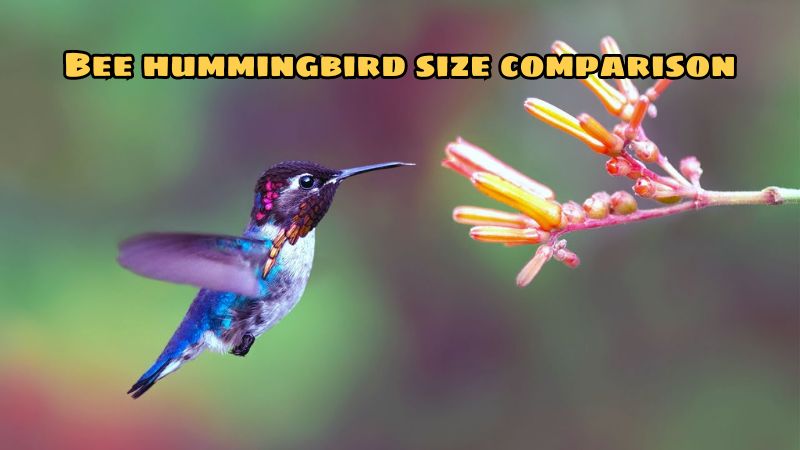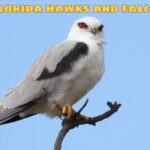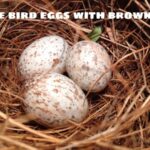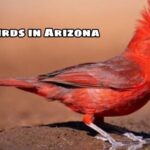Bee hummingbird size comparison: Have you ever wondered about the size of hummingbirds, one of nature’s most vibrant and active creatures? Hummingbirds, part of the family Trochilidae, are among the smallest birds in the world. They are native to the Americas, with about 366 species found from Alaska all the way to Tierra del Fuego.
However, most live in Central and South America. Despite their small size, hummingbirds are known for their fast flight, maneuverability, and exceptional metabolism. Read the article below about bee hummingbird size comparison from birdsofjoy.com!
Bee hummingbird size comparison
When it comes to size, hummingbirds are truly unique. They are the smallest of all adult birds, with an average length of just 7.5–13 cm (3–5 in). To get an idea of how small that is, consider this:
They are smaller than a typical teacup, typically about 9.5 cm (3.75 in) tall.
They are about the length of a standard business card, about 8.9 cm (3.5 in) long.
They are roughly the width of a dollar bill, about 15.5 cm (6.14 in). The smallest hummingbird is the bee hummingbird. It is only 5 cm (2.0 in) long — about the size of a large ground bee — and weighs less than 2.0 g (0.07 oz). That’s less than a penny! At the other end of the hummingbird size spectrum are the giant hummingbirds. It grows up to 23 cm (9.1 in) long and can weigh 18–24 grams (0.63–0.85 oz). That’s about the size of a large tomato and the weight of four to five AA batteries.
Outstanding features of hummingbirds
Hummingbirds aren’t just famous for their small size. They have a number of unique characteristics that set them apart:
Fast and agile flight: Hummingbirds are known for their fast and agile flight. They can hover in mid-air, fly forward, backward, and even upside down!
Exceptional metabolism: These birds have high metabolisms, which means they need to eat a lot. A single hummingbird can consume up to half its body weight in food each day!
Long beaks and bright plumage: Hummingbirds are known for their long, thin beaks, which they use to drink nectar from flowers. Male hummingbirds are also known for their bright plumage, especially shades of blue, green, and purple. In short, hummingbirds are fascinating creatures. Despite their small size—or perhaps because of their small size—they are some of the most distinctive birds in the world. Their brilliant colors, rapid flight, and remarkable adaptability make them interesting birds to observe and study.
10 smallest birds in the world (by length)
Esmeraldas Wood Star (Chaetocercus berlepschi)
The Esmeraldas Wood Star is a hummingbird found only on the west coast of Ecuador. The bird is extremely rare, with only about 1,000 to 2,700 mature individuals remaining. Their numbers are declining due to habitat loss.
Calliope Hummingbird (Selasphorus calliope)
The Calliope hummingbird is the smallest bird native to the United States and Canada. At 7 cm long, it is about the length of a lighter. Its diet consists of nectar and small insects. It is named after the Greek muse Calliope, who was famous for her beautiful singing voice.
Costa Hummingbird (Calypte costae)
The Costa Hummingbird, with its bright purple plumage on its cap and throat, is found in the southwestern United States and Mexico. This bright plumage is used in its courtship display to attract mates.
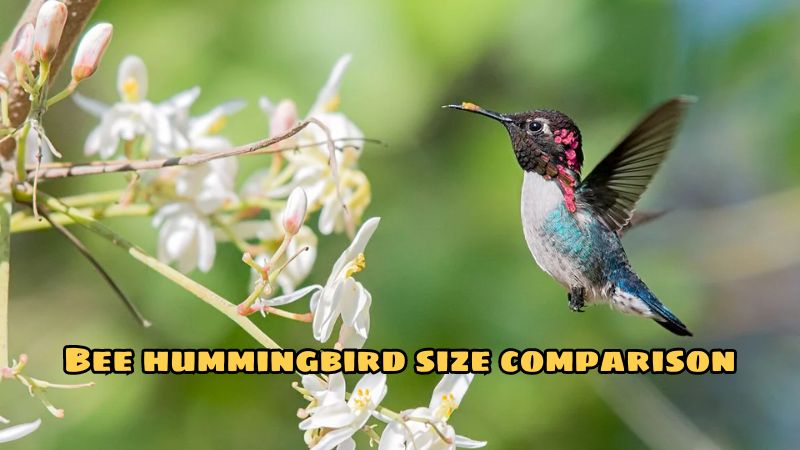
Firecrest (Regulus ignicapilla)
Firecrests are similar in appearance to orioles but are rarer and more brightly coloured. They can be seen in the UK and across Europe.
Pocket Pardalote (Pardalotus punctatus)
The spotted pardalote is a small, colourful Australian bird known for its distinctive, annoying breeding call. It lives in the canopy of eucalypt trees, feeding on small insects.
Pale-billed Nightingale (Dicaeum erythrorhynchos)
The pale-billed nightingale is an olive-green bird found on the Indian subcontinent. It has a symbiotic relationship with mistletoe, helping it pollinate and disperse seeds.
Weebill (Smicrornis brevirostris)
The weebill is Australia’s smallest bird, weighing around 6 grams. It feeds mainly on insects, such as beetles and flies, but will also eat seeds.
Cape Pendulum Tit (Anthoscopus minutus)
The Cape Pendulum Tit, found in southern Africa, builds nests from spider webs, sheep’s wool and plant fibres. These nests are intricately designed with false entrances to fool egg thieves.
Oriole (Regulus regulus)
The smallest bird in the UK, the oriole has bright orange/yellow feathers on the top of its head. It can lay up to 12 eggs in a clutch, about one and a half times its body weight.
Conclusion
The bee hummingbird (Mellisuga helenae) is a real standout when compared to other small birds. At just 5.5 cm long and weighing 1.95 grams, it is not only the world’s smallest bird, but also one of the smallest vertebrates. When compared to other birds on the list, such as the 6.4 cm long Esmeraldas or the 7 cm long Calliope, the bee hummingbird still holds the top spot for smallness. Its size is even smaller than many insects, demonstrating the wonders of nature in creating extremely delicate and compact creatures.

